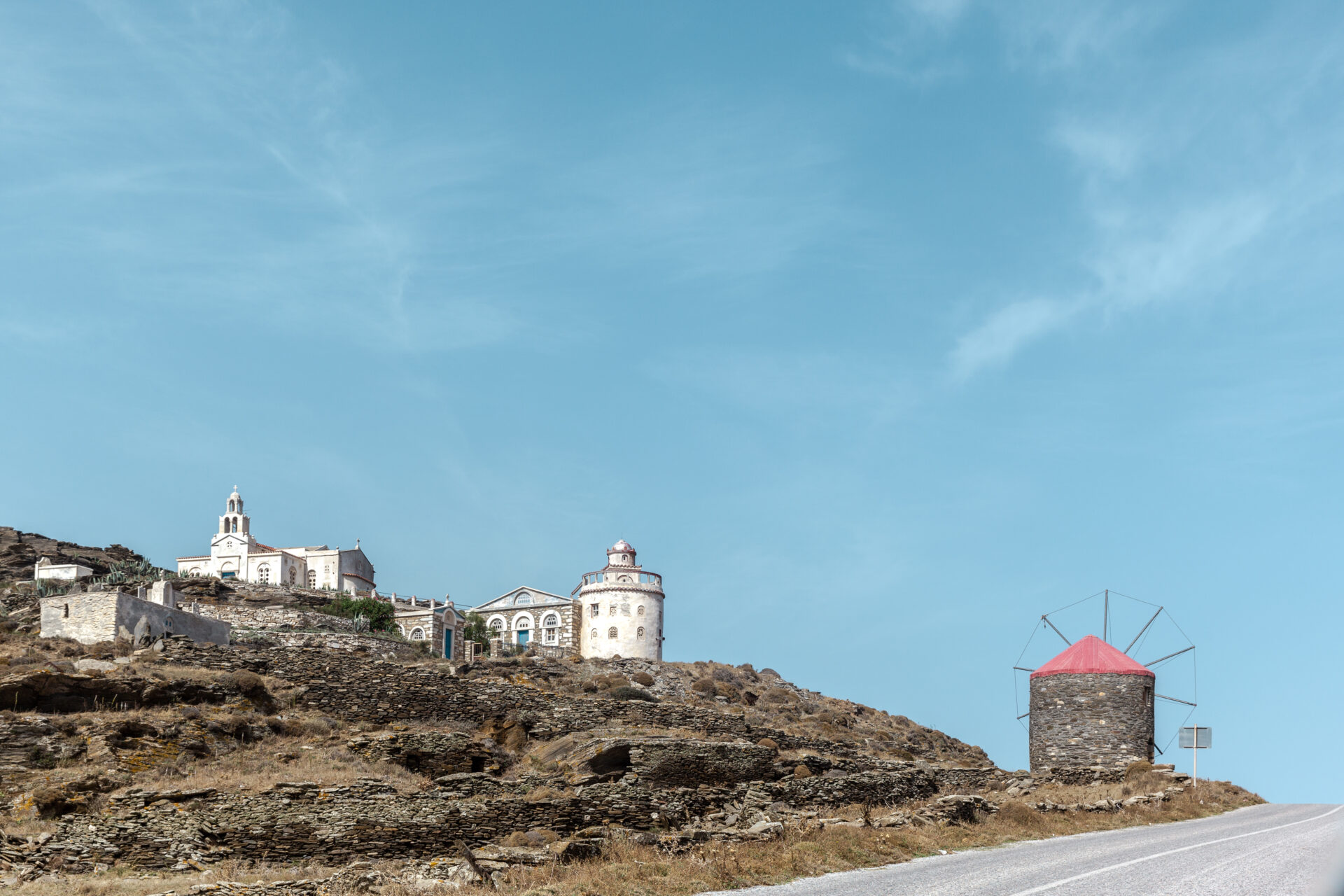With its rich and proud history and scenic beauty, the island of Tinos is a unique destination for culture-loving travellers and nature lovers alike. The activities in Tinos are countless and its sights are impressive. From its archaeological treasures and monuments to its gorgeous beaches and picturesque villages (each with its hiking trail), Tinos offers a one-of-a-kind combination of experiences. Oh, and don’t forget about the food. A visit to Tinos is a culinary treat and an opportunity to taste the local wine varieties.
Must-visit villages in Tinos
Tinos, known for its artistic tradition and architectural heritage, hosts a plethora of picturesque villages that are worth visiting. Each village on the island stands out for its unique beauty and distinctive character, offering visitors an authentic taste of Cycladic life. From the traditional village of Pyrgos, renowned for its rich marble craftsmanship, to the quaint village of Volax with its impressive granite formations, Tinos reveals a rich mosaic of history, culture, and natural beauty. Discover the cobblestone alleys, charming cafes, and hospitable locals that make each village a unique experience and an integral part of your journey.
Pyrgos
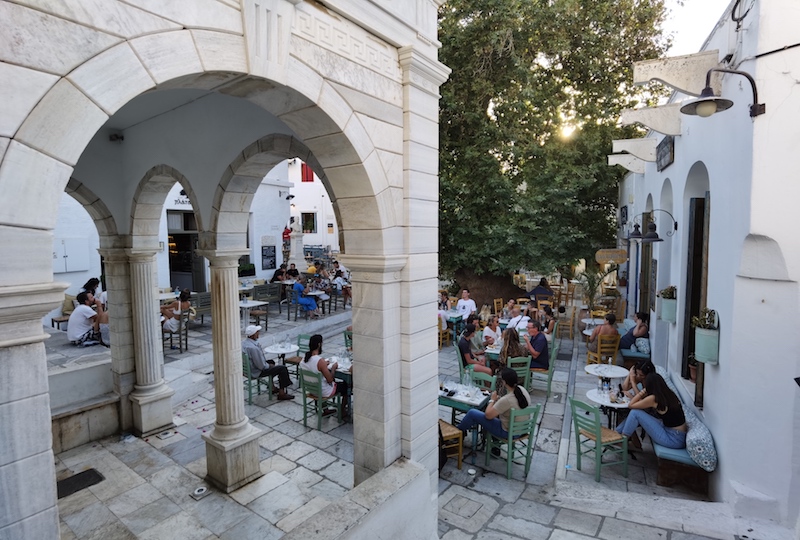
Pyrgos is a traditional settlement, widely known as an open-air folk art museum. The marble sculptures will captivate you, and don’t forget to taste a delicious galaktoboureko at the main square.
Panormos
An old fishing village on the island’s west coast, Panormos is famous for its beautiful sandy beaches and the abandoned lighthouse on the little isle of Planitis, right across the port.
Volax
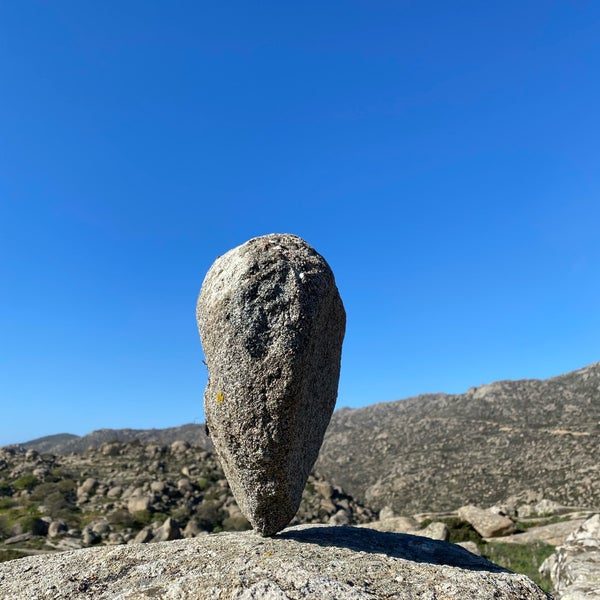
The village of Volax gets its worldwide fame from its gigantic granite rocks, which (according to geologists) were formed more than 15 million years ago, due to the changes in temperature and humidity. For art-loving travellers, the village also features a basketry workshop and an open-air theatre.
Dyo Choria
Despite its name literally meaning “Two Villages”, Dyo Choria is just one. The main square is extremely picturesque, with its ancient plane tree and beautiful medieval arches offering a time-travelling feeling. The square is ideal for any visitor to enjoy a traditional spoon-sweet and see why the locals are so well known for their hospitality.
Kardiani
Kardiani is famed for its unique architecture. When you visit, you will see why. Its double-decker houses share a breath-taking view of the sea over the cliff. But wait. There’s more. The village’s drinking fountains and the untamed nature combine for a beautiful fairytale-like scenery.
Steni
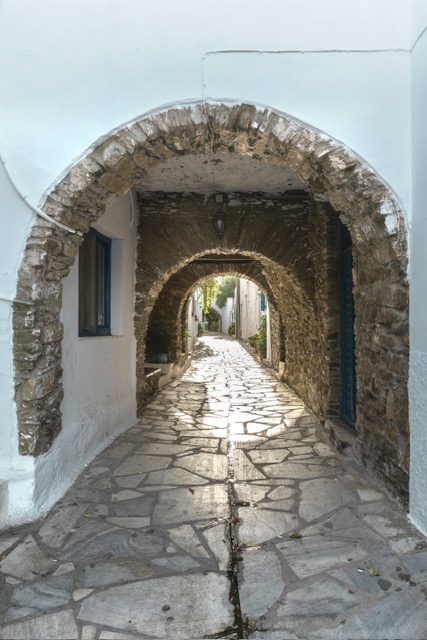
Steni is located on the Livaderi plateau, west of Tsiknias, the island’s tallest peak. It is the fourth most populated settlement on the island and it takes its name (literally meaning narrow) from its elongated shape.
Komi
Komi is built in the middle of the island’s most prosperous valley, Livadi. Every May the Artichoke Festival is a must-visit event, with traditional dishes and lots of folk dancing. The village is split within two settlements and it has a catholic church with interesting hagiography.
Must-see churches and chapels
Tinos, known as the Island of Our Lady of Tinos, is one of the most important religious destinations in Greece, hosting some of the most impressive and historic churches in the Cyclades. The churches attract visitors not only during Easter in Tinos but throughout the year, as their unique architecture and rich history offer a unique opportunity for visitors to discover the island’s cultural and religious heritage.
Our Lady of Tinos
Our Lady of Tinos, known also as Panagia tis Tinou, or simply as Megalochari, is probably the most important worship site in Greece and one of the greatest Christian pilgrimages worldwide. The holy icon was retrieved in 1823 and ever since it has been linked with a number of miracles. According to folklore, Virgin Mary appeared to the nun Pelagia in her sleep and told her where the miraculous icon was buried.
The church was built in record-breaking time for the early 1800s. A complex so big and complicated only took eight years to be built and is an impressive specimen of architecture and Christian art. The feast of Our Lady of Tinos happens four times a year, and it attracts thousands of worshipers from around the globe.
Our Lady of the Angels
The Monastery of Kechrovouni, also called Kyria ton Angelon (Our Lady of the Angels), is the oldest active monastery of Tinos. According to tradition, the Virgin Mary indicated where the monastery should be built to three brothers. This is where the nun Pelagia was cloistering when the Virgin Mary appeared to reveal the point of the icon’s burial. Every 23rd of July, the icon is transferred to the monastery, where a celebratory service is held. One of our villas, the Angels’ Grand Suite, is named after the monastery.
Catholic Shrine of the Sacred Heart of Jesus
The monastery is located on Mount Exomvourgo, just 2.5 kilometres from the White Tinos Luxury Suites. It was founded in 1661 by monk Michael Alvertinis when we relocated outside of the fort’s walls. The monastery was later rebuilt under the instructions of Friar Alousios Destros and was renamed Iera Kardia (Sacred Heart). Every July the Sacred Heart festival lasts a whole week.
The Ursulines Monastery
Founded in 1862 at Loutra, Tinos, the Ursulines Monastery is one of the most historical on the island. Part of the building is today used as a primary school, while a large part is a beautiful museum, where visitors can admire the history of the monastery and the island as a whole.
Kionia – the Ancient Temple of Poseidon and Aphitrite
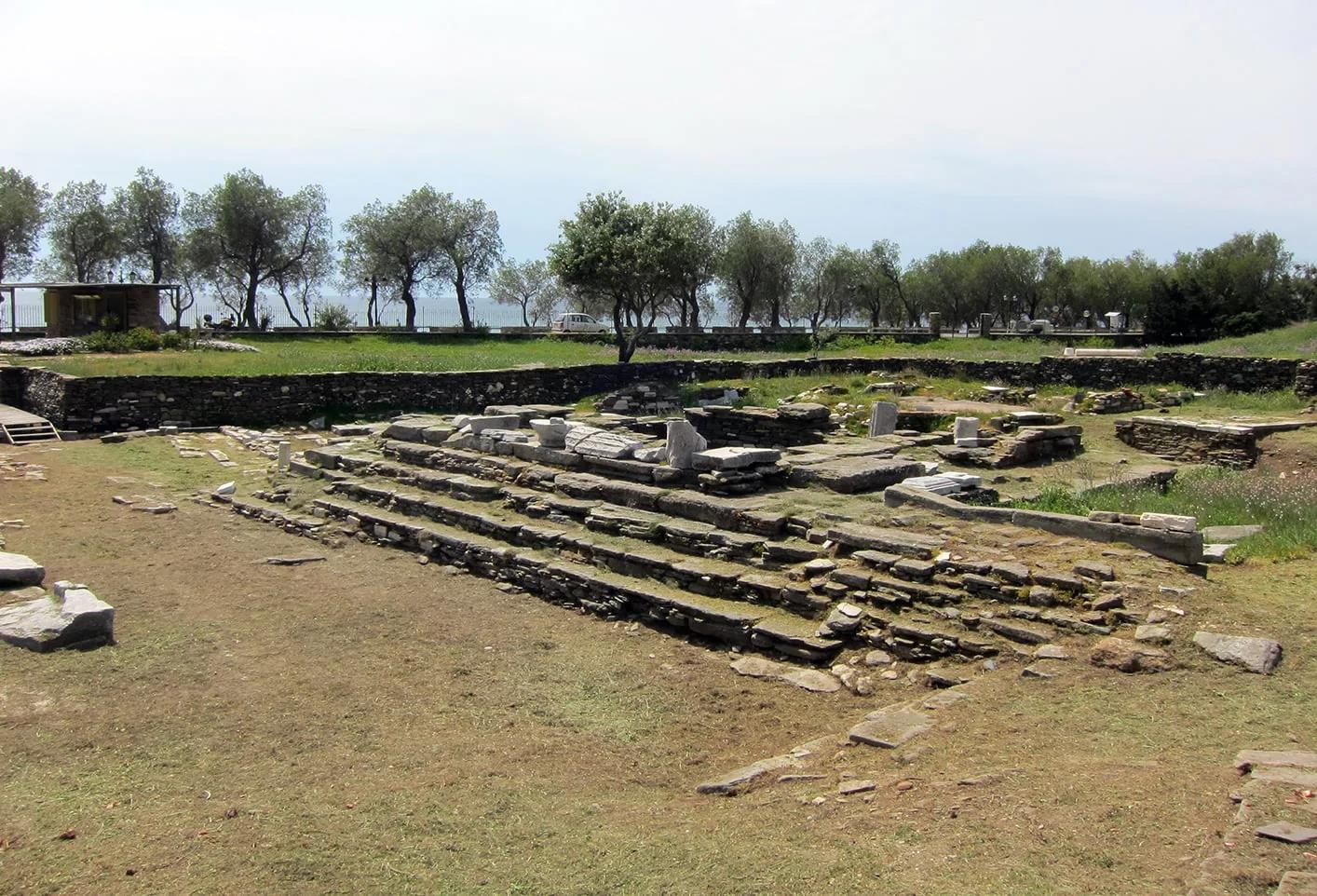
At Kionia, 3km west of Chora, the temple of the god Poseidon and his wife Amphitrite is the sole temple throughout the entire Cyclades that is dedicated to the gods of the sea. Epigraphs and historical commentaries show that Poseidon was worshipped as a therapists and Aphitrite cured female infertility. Built using the Doric rhythm, austere and meticulous, the temple has some original features such as the fountain platform designed by its creators from Tinos. Constructed using gneiss and marble in various hues after sculptors from different areas were called to create it, whereas Andronikos of Kyristos created a famous sundial which is now exhibited at the Archaeological Museum of Tinos.
Beaches you must visit
Tinos, one of the most picturesque islands in the Cyclades, is renowned not only for its rich religious and cultural tradition but also for its stunning beaches. With sandy stretches, crystal-clear waters, and landscapes that combine mountains and sea, the beaches of Tinos offer unique experiences of relaxation and exploration. Let’s take a closer look at some of the most beautiful beaches in Tinos.
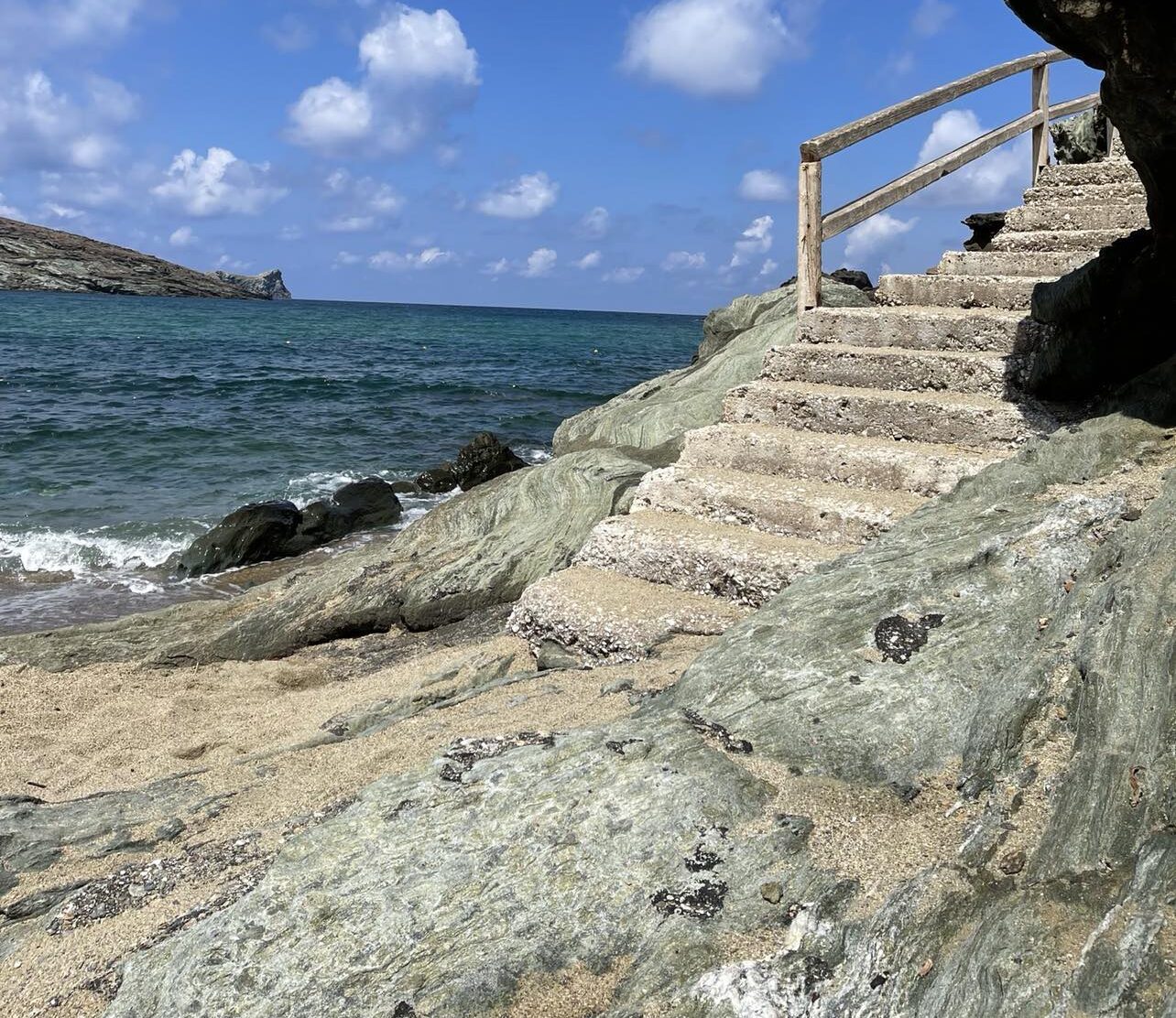 Livada Beach
Livada Beach
Livada, on the North part of the island, is about 6 kilometres from our apartments. You can access it via Steni, then heading to Myrsini and next towards Livada. The beach is known for its thick pebbles, rocks and deep waters. It is non-organised, but there is plenty of shade under the Athel pines. It is ideal for those looking for a peaceful swim. The downside is that if there is northern wind, the waves can be huge. It is one of Tinos most special beaches, with a wild kind of beauty. The highlight is the faces sculpted on the rocks, half-erased by the salt and waves.
Kolimbithra
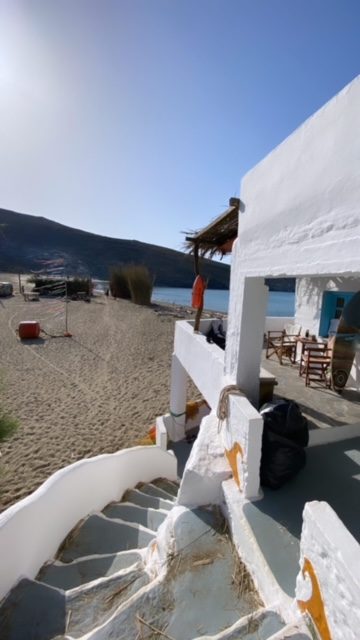
We are talking about the most sung beach of Tinos. It is split in two. The sheltered part is peaceful. You will find sunbeds, parasols, crystal blue waters and the cutest beach volleyball court.
In the part that is exposed to the wind, you will find surfers living the dream, waiting for the next
Pachia Ammos
Located in the bay facing the narrow between Tinos and Mykonos, is one of the most calm and peaceful on the island. It is also known for its dune.
Apigania
Apigania, in the southwest of the island, is about 11 kilometres away from the island’s Chora. It is a struggle to reach, but once there, it is definitely worth it. Its sky-blue waters and white rocks create a gorgeous scenery, a true paradise for those seeking peace and want to avoid crowds.
Malli
Located on the northernmost spot of Tinos, Malli is about 30 kilometres away from Chora. It is non-organised and there are no stores nearby, it is so tranquil. A perfect solution for those seeking serenity.
Santa Margarita
Situated in the southeastern part of the island, Santa Margarita is almost 16 kilometres from Chora and 6 kilometres from White Tinos. Isolated and unorganised, it is known for its raw beauty. A sandy beach, with super fine sand, and crystal clear waters, it is the epitome of what you might want if you are up for a peaceful and mind-cleansing vacation.
Rochari
Rochari Beach, close to Panormos, is an organised beach that is welcoming even for those not interested in sunbeds and parasols, as there is a natural shade under the Athel pines. It is 28 kilometres away from Chora and offers a beautiful view of the Aegean and the little isle of Planitis. It is vulnerable to strong northern winds, so it should be avoided if this is the case.
Where to stay in Tinos
Tourism in Tinos is rapidly developing. This has created a plethora of new accommodation options for our visitors. From traditional hotels to rooms to let and from modern villas to Tinos suites, there is a vast amount of possibilities.
Moreover, there are traditional old houses and apartments, now converted into rooms to let. These include some offers for luxury accommodation. This variety of options, combined with the island’s cultural footprint and its natural beauty, make Tinos accommodation a very popular destination for travellers.
Must-visit museums in Tinos
Tinos, beyond its natural beauty and religious tradition, also hosts a series of noteworthy museums that provide unique opportunities to understand its artistic and cultural heritage.
Museum of Marble Crafts
At the Museum of Marble Crafts, in Pyrgos, visitors learn about art and architecture using marble. They see the technology involved in creating those elegant structures. The equipment is presented thoroughly, dating from antiquity to the present. The permanent exhibition, which describes the intricate meshing of tools and techniques used in working marble in a detailed and live manner, puts an emphasis on the pre-industrial and proto-industrial Tinos, the most important centre of marble crafts in Modern Greece.
Kostas Tsoclis Museum
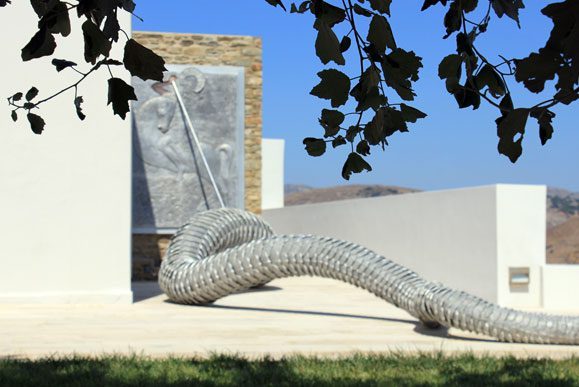
A former primary school, at Kampos village, has now been converted into the Kostas Tsoclis Museum. Dedicated to local artists, the museum features Tsoclis’ own work, as well as other local artists. The aesthetics of the venue are impressive and the Saint George versus the dragon sculpture will captivate you.
Museum of Traditional Pottery of Tinos
More than 200 ceramic objects are showcased here. From Tinos, from Canakkale in Turkey, from France, Italy, and the Netherlands, there are showcase pieces from around Europe. This diversity proves the importance of Tinos as a commercial port back in the 18th and 19th centuries. Some of the exhibits include the traditional Cycladic pitchers and urns. And then, there is an impressively enjoyable workshop run by Giannis Exilzes.
Basketry in Tinos
Basketry is a craft that brought huge commercial success to Tinos and the village of Volax. Using branches of willows, reeds, and wickers, locals were creating high-quality baskets. This tradition blossomed mainly during the 19th and early 20th centuries when whole families in Volax depended on the sales of the baskets to make a living. The Volax baskets were famous, because of their durable structure, as they were mainly used by farmers and handymen. Today there are two workshops in Volax, while the craft is also carried on by amateurs.
Tinos Archaeological Museum
The Archaeological Museum of Tinos is one of the most important in Greece, as visitors have the chance to admire showpieces dating back to 10,000 B.C. One of the most impressive exhibits is the sundial of Andronikos of Kiristos, which many have called the first ancient computer.
Yiannoulis Chalepas Museum
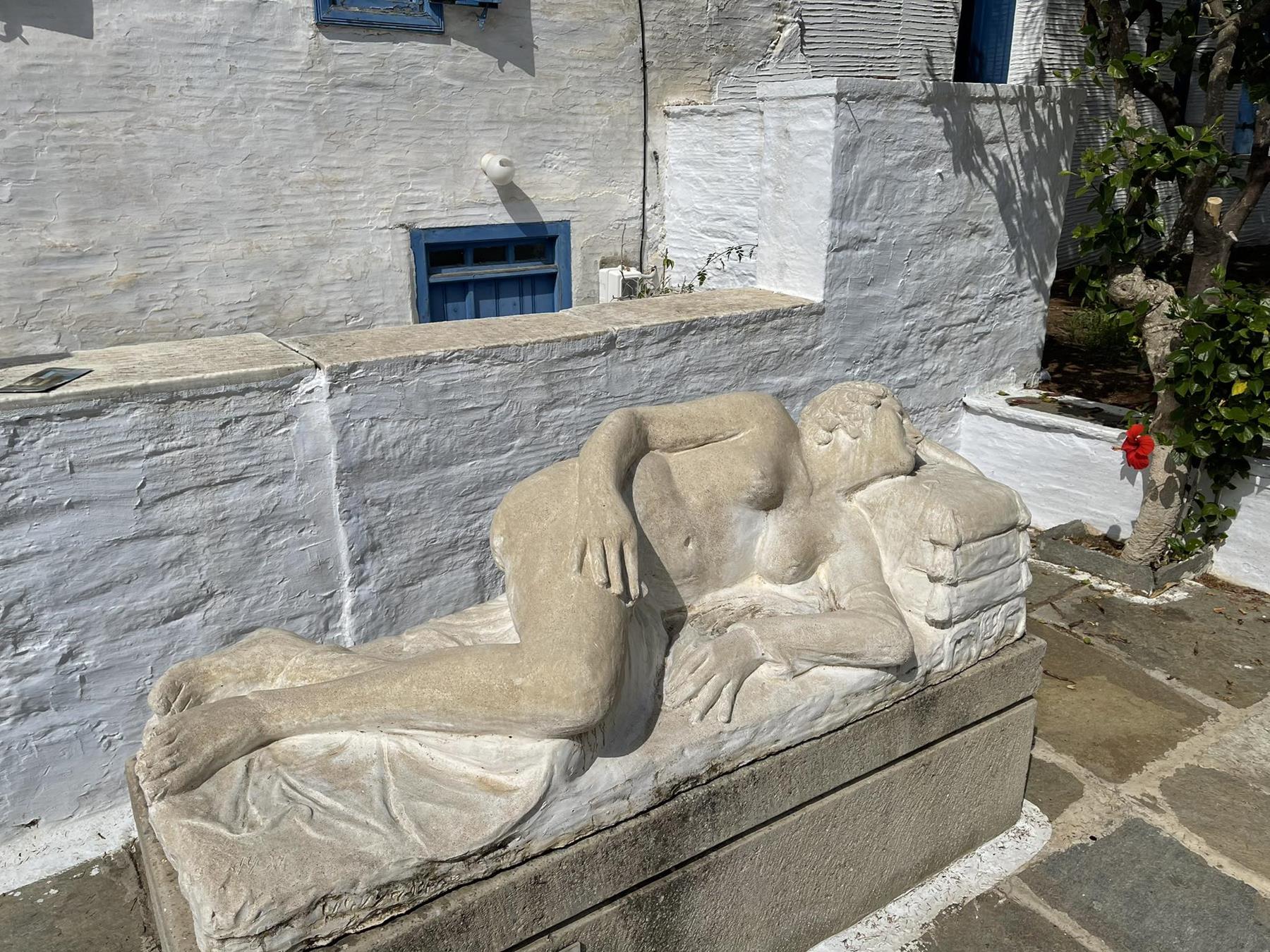
Where to eat in Tinos
Discover the secrets of local cuisine and enjoy an unforgettable culinary adventure. Here you will find some of the best places to eat in Tinos.
O Ntinos
O Ntinos welcomes you to a beautiful location, with its always ready-to-serve staff and amazing dishes. There is no doubt that this will be the culinary experience of a lifetime. And everything starts will a fish soup on the house, the moment you enter the restaurant.
San to Alati
Located at the Agios Fokas beach, it offers an experience like no other. It is like touching a hidden treasure. You will be served local dishes, all created with local products. And, importantly, all this in a perfect value-for-money ratio.
Apodrasi
Apodrasi tavern offers an authentic culinary experience. Mr Kostas cooks using exclusively time-old traditional recipes and local products. It is there where you will eat like old Tinos residents used to.
Svoura
Chef Vangelis Sterpas combines modern cuisine with traditional recipes. Taste his fried butter beans, the zucchini chips, the Komi artichoke, the “kopanisti” cheese dip, the aubergine dip, the veal with mashed aubergine, the fresh Cycladic salad, and his handmade bread.
Douar
Meat lovers, Douar is for you. An old-school chophouse in Steni, it is just amazing after a swim at Livada.
Tarsanas
Tarsanas is the perfect choice for fresh fish and seafood. Located at the old dockyard, it is known for its traditional Cycladic dishes and Mediterranean cuisine. It is one of the must-go places for foodies who visit Tinos.
Choreftra
Located on Kampos’ main square, Choreftra is right across the Agia Aikaterini chapel. What will you eat here? Pork leg with tomato, moussakas with artichoke, veal with red wine and fresh pasta, or the famous rooster with orzo. All vegetables come from the family’s garden.
Where to have fun in Tinos
Tinos, although renowned for its tranquility, also offers many entertainment options to suit all tastes. In the town of Tinos, visitors will find numerous cafes, bars, and restaurants where they can enjoy anything from relaxing drinks by the sea to live music. The coastal areas are vibrant on summer evenings, with beach bars offering refreshing cocktails and parties lasting until the early morning hours. Additionally, the island’s villages frequently organize cultural events and festivals, where visitors can enjoy traditional dances while experiencing authentic Cycladic hospitality.
Sunset Bar
Enjoy your cocktail, while you are treated with the best view possible, as the whole Aegean is in front of you. And if you feel hungry, don’t hesitate and try Sunset Bar’s sushi. You won’t regret it.
Tenok
Tenok is Tinos’ ancient name. Today it is the name of the new all-day bar in Chora. Fresh and old-school cocktails and relaxing music make it a must-visit during your stay here.
Santiago
Summer days and nights are better when spent in the beautiful garden of Santiago. It is where Cycladic tradition blends with Latin American spirits to create something wonderful.
Koursaros
Every good day ends with a drink at Koursaros. It has always been like that for locals and visitors alike.
Where to shop in Tinos
The old street heading to the church or Our Lady is still the most commercially active on the island. It is full of shops and stores, serving worshipers and tourists. Accessories, clothing, jewellery, and more can be found both there and on the perpendicular streets.
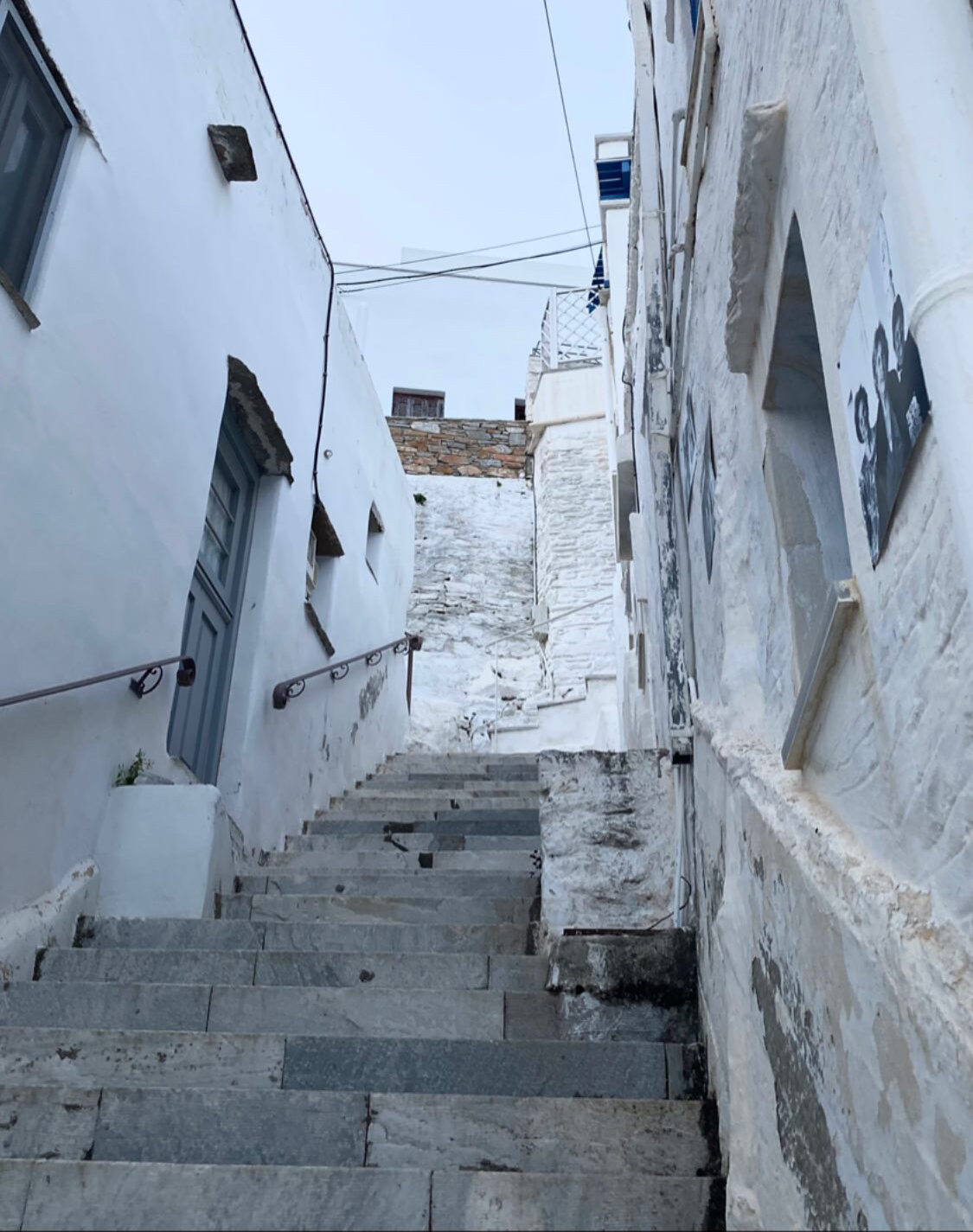
Top-10 Attractions in Tinos
Let’s take a look at our Top 10 Attractions in Tinos. Follow us on this journey and discover the 10 top sights that make Tinos a destination worth exploring.
1# Tinos as a culinary adventure
Dining in Tinos is a hidden treasure hunt. Every bite is a piece of a puzzle that is worth every step. From local products used to create traditional recipes to Tinos’ wine varieties, which have captivated visitors for centuries, the tastes of Tinos are a strong part of the island’s culture.
2# Volax is… out of this world
At Volax village, you will encounter a unique natural landscape that looks like it belongs to an alien panel. Granite rocks, known as volakes, are scattered around the area, creating the illusion of having travelled to the moon.
3# Scenic Kardiani
One of the most picturesque villages in Tinos is Kardiani and it will captivate you with its natural beauty. It is located at an idyllic spot and it is one of the most… Instagrammable places in Tinos. The green of the plane trees and the white of the traditional houses combine for a painting-worthy scene.
4# The Exomvourgo Rock
Exomvourgo, also known as Xobourgo to the locals, is probably the second most recognisable sight of Tinos, after Our Lady of Tinos. Located on a 640-metre cliff, which is one of the best-known climbing venues in Greece.
5# The Livada Reliefs
Livada is the epitome of wild and raw beauty. The beach, located on the northern part of the island, is almost constantly battered by huge waves. Those waves have partially erased the anaglyph faces on the rocks, creating a heavenly scenery for visitors.
6# The Kostas Tsoclis Museum
The museum promotes Kostas Tsoclis’ multifaceted talent. The famous painter and sculptor, with huge commercial and artistic success in Rome, Paris, and Berlin, is celebrated here, along with other artists, both from Greece and abroad.
7# Pyrgos, where marble is king
Pyrgos is known as the marble village. The sculptures there are breathtaking and all houses are decorated with elegant marble and stone details. The village is home to three museums and it is no surprise that the most famous Greek sculptor, Giannoulis Halepas, grew up in Pyrgos.
8# Walking through authenticity
There are more than 150 kilometres of way-marked hiking routes in Tinos. They connect villages and lead to archaeological sites, monasteries, Venetian forts, and other specimens of Cycladic architecture. Ask at the reception for a map, or send us your questions!
9# The least known villages
Every village in Tinos is unique. And each one visited has you wanting more. Kardiani has won awards as a traditional settlement and the population is half-Catholic, half-Orthodox. The Falatados village is famous for its raki and wines. At Dyo Choria, you will love the beautiful main square, with its drinking fountains. As you will be exploring villages, you will find out more and more about the true identity of Tinos.
10# Wine tasting at Vaptistis Winery
Visit Steni village and don’t forget to book your wine tasting at Giannis Moraitis’ Vaptistis Winery, the famed vineyard that produces Assyrtiko and Mavrotragano types of wine, two rare and exquisite varieties.


